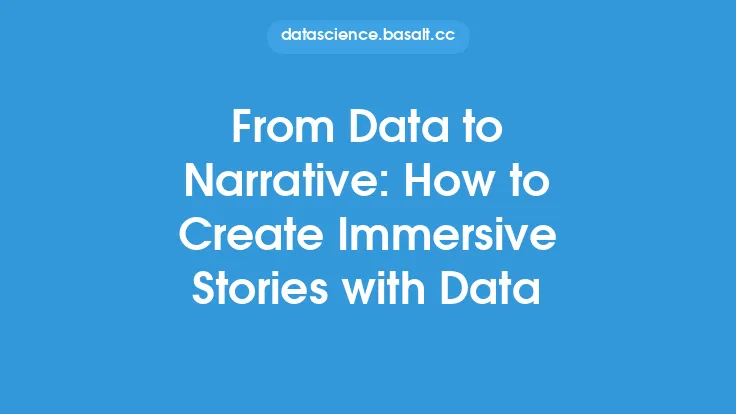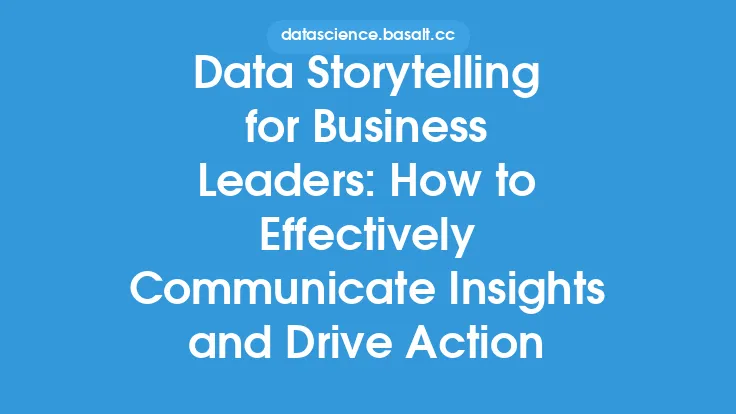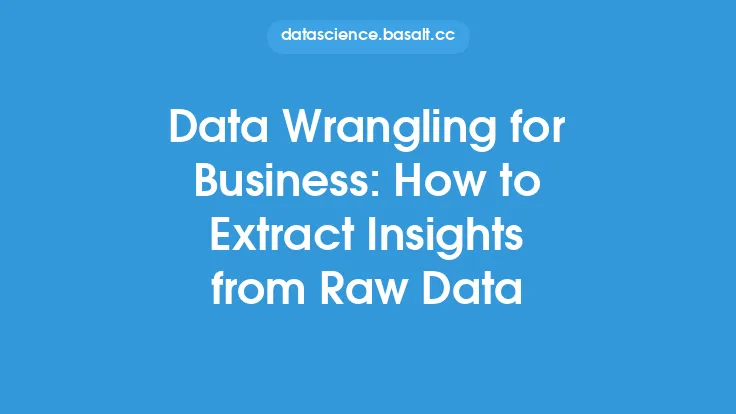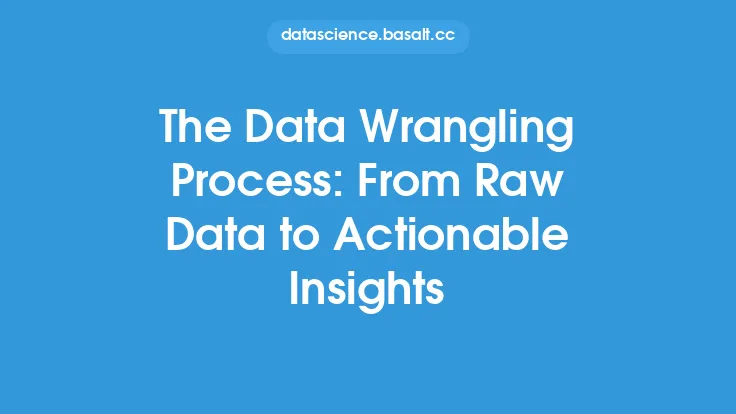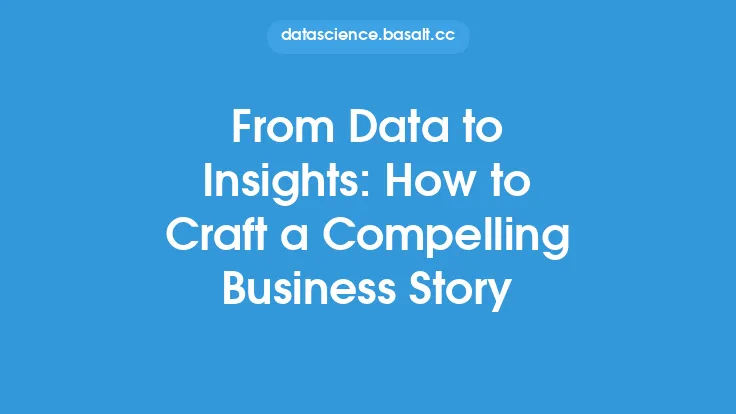To create actionable insights from your data, it's essential to have a solid understanding of the data analysis process and the tools used to extract insights. The first step in this process is to define the problem or question you're trying to answer with your data. This will help guide your analysis and ensure that you're focusing on the most relevant information. Once you have a clear understanding of the problem, you can begin to collect and prepare your data for analysis. This may involve cleaning and preprocessing the data, as well as transforming it into a format that's suitable for analysis.
Understanding Your Data
Understanding your data is critical to creating actionable insights. This involves having a deep understanding of the data sources, data quality, and data structure. You should be able to identify the different types of data you're working with, such as numerical, categorical, or text data, and understand how to work with each type. Additionally, you should be aware of any data quality issues, such as missing or duplicate values, and have a plan for addressing these issues. By having a thorough understanding of your data, you can ensure that your analysis is accurate and reliable.
Data Analysis Techniques
There are several data analysis techniques that can be used to create actionable insights, including descriptive analytics, diagnostic analytics, predictive analytics, and prescriptive analytics. Descriptive analytics involves analyzing historical data to identify trends and patterns. Diagnostic analytics involves analyzing data to identify the root cause of a problem. Predictive analytics involves using statistical models and machine learning algorithms to forecast future events. Prescriptive analytics involves using optimization techniques to identify the best course of action. By applying these techniques to your data, you can gain a deeper understanding of your business and make informed decisions.
Data Visualization
Data visualization is a critical component of creating actionable insights. It involves using graphical representations to communicate complex data insights to stakeholders. There are several data visualization tools available, including tables, charts, and maps. The choice of visualization tool will depend on the type of data being analyzed and the insights being communicated. For example, a bar chart may be used to compare categorical data, while a scatter plot may be used to analyze the relationship between two numerical variables. By using data visualization effectively, you can make your insights more accessible and engaging to stakeholders.
Statistical Modeling
Statistical modeling is a powerful technique for creating actionable insights from data. It involves using statistical algorithms to identify patterns and relationships in the data. There are several types of statistical models, including regression models, time series models, and machine learning models. Regression models are used to analyze the relationship between a dependent variable and one or more independent variables. Time series models are used to forecast future events based on historical data. Machine learning models are used to identify complex patterns in the data. By applying statistical models to your data, you can gain a deeper understanding of your business and make informed decisions.
Big Data and Advanced Analytics
Big data and advanced analytics are becoming increasingly important in the field of data analysis. Big data refers to large and complex datasets that require specialized tools and techniques to analyze. Advanced analytics involves using sophisticated statistical and machine learning algorithms to extract insights from these datasets. There are several big data technologies available, including Hadoop, Spark, and NoSQL databases. These technologies provide the scalability and flexibility needed to analyze large datasets. By leveraging big data and advanced analytics, you can gain a competitive advantage and make informed decisions.
Best Practices for Creating Actionable Insights
There are several best practices for creating actionable insights from your data. First, it's essential to have a clear understanding of the problem or question you're trying to answer. This will help guide your analysis and ensure that you're focusing on the most relevant information. Second, you should have a thorough understanding of your data, including the data sources, data quality, and data structure. Third, you should use a variety of data analysis techniques, including descriptive analytics, diagnostic analytics, predictive analytics, and prescriptive analytics. Fourth, you should use data visualization effectively to communicate complex data insights to stakeholders. Finally, you should leverage big data and advanced analytics to extract insights from large and complex datasets. By following these best practices, you can create actionable insights that drive business value.
Common Challenges and Limitations
There are several common challenges and limitations to creating actionable insights from data. First, data quality issues can make it difficult to extract accurate insights. Second, the complexity of the data can make it challenging to analyze and interpret. Third, the lack of skilled resources can make it difficult to apply advanced analytics techniques. Fourth, the lack of clear goals and objectives can make it challenging to focus the analysis and ensure that the insights are relevant. Finally, the lack of effective communication can make it difficult to convey the insights to stakeholders. By being aware of these challenges and limitations, you can take steps to address them and ensure that your insights are accurate and actionable.
Future of Data Analysis
The future of data analysis is exciting and rapidly evolving. There are several trends that are expected to shape the field, including the increasing use of big data and advanced analytics, the growing importance of artificial intelligence and machine learning, and the rising demand for data scientists and analysts. Additionally, there is a growing need for real-time analytics and the ability to analyze streaming data. By staying up-to-date with these trends and developments, you can ensure that your organization is well-positioned to extract insights from its data and drive business value. Furthermore, the use of cloud-based technologies and the increasing adoption of data-driven decision-making are expected to continue to shape the field of data analysis. As data continues to grow in volume, variety, and velocity, the need for effective data analysis techniques and tools will only continue to increase.
